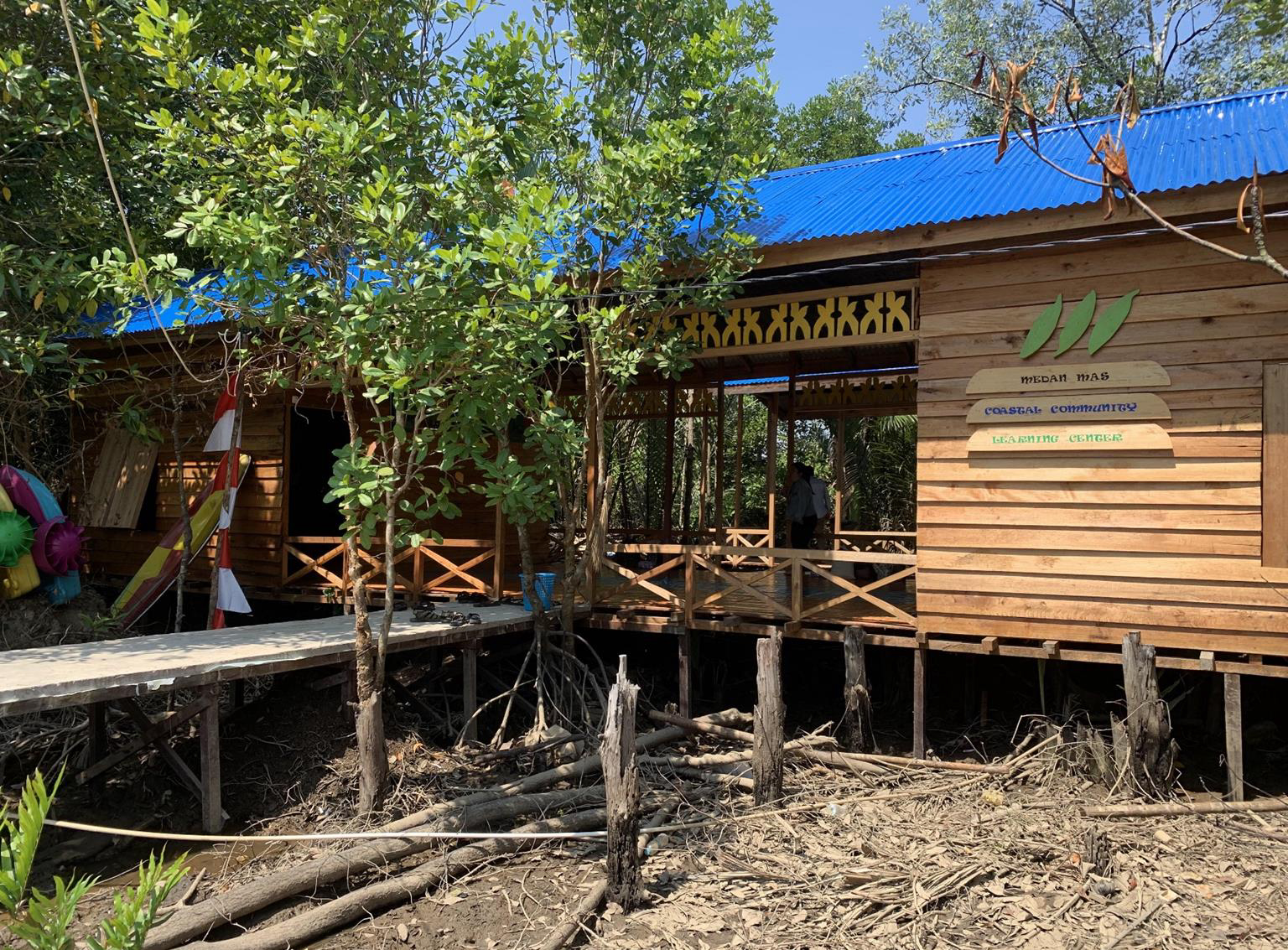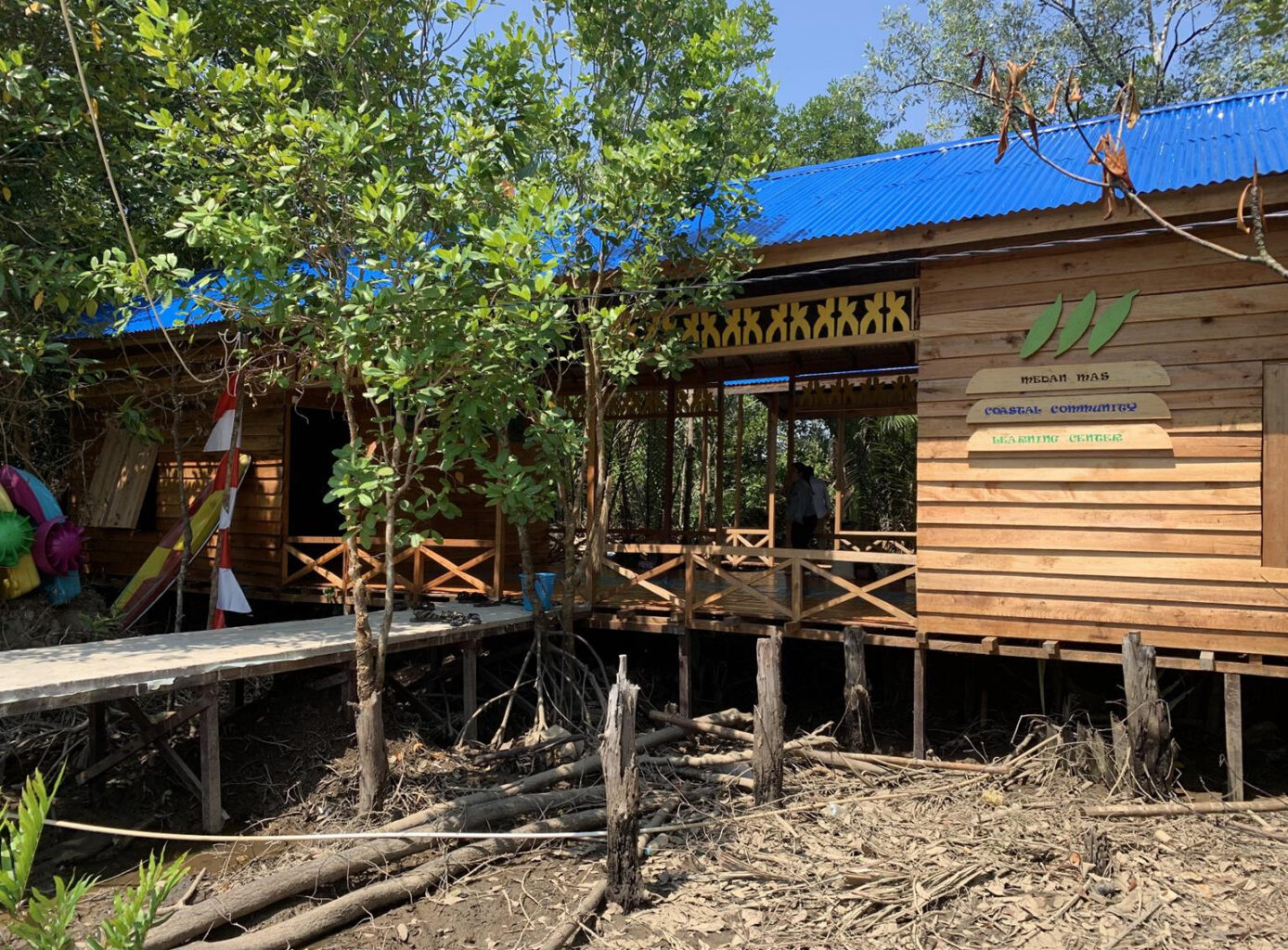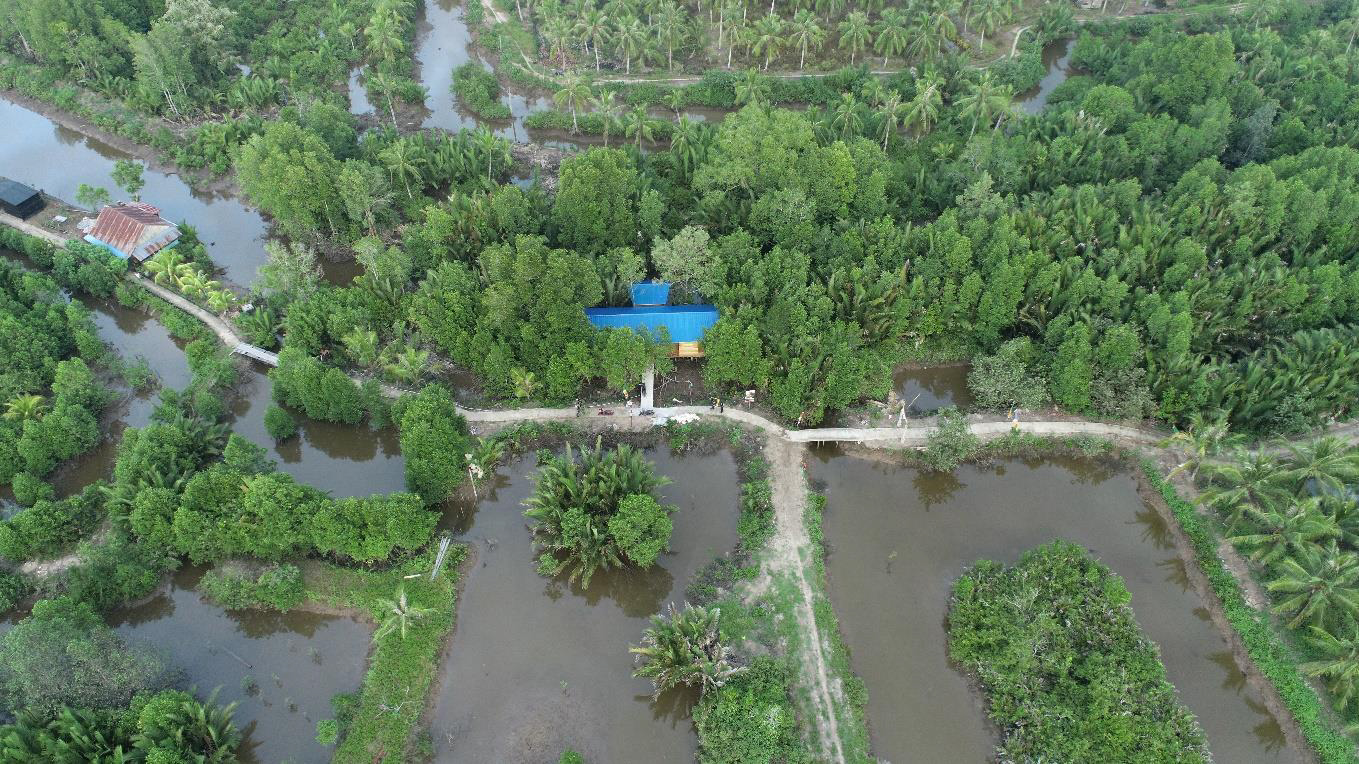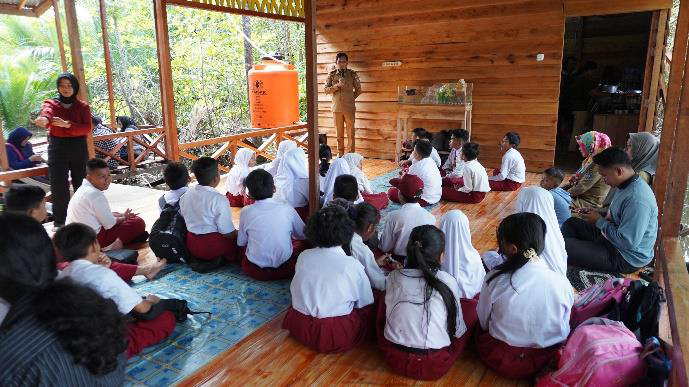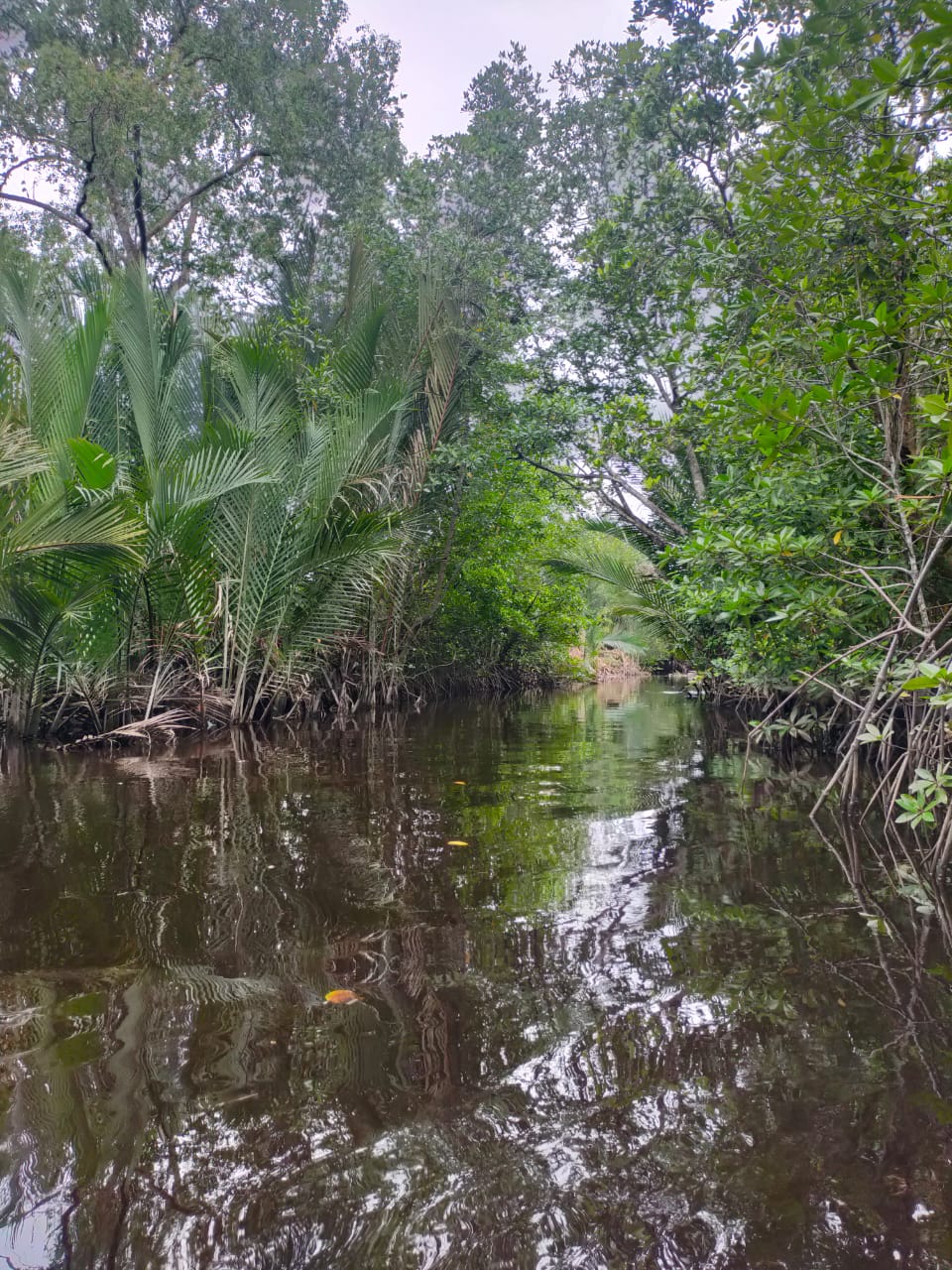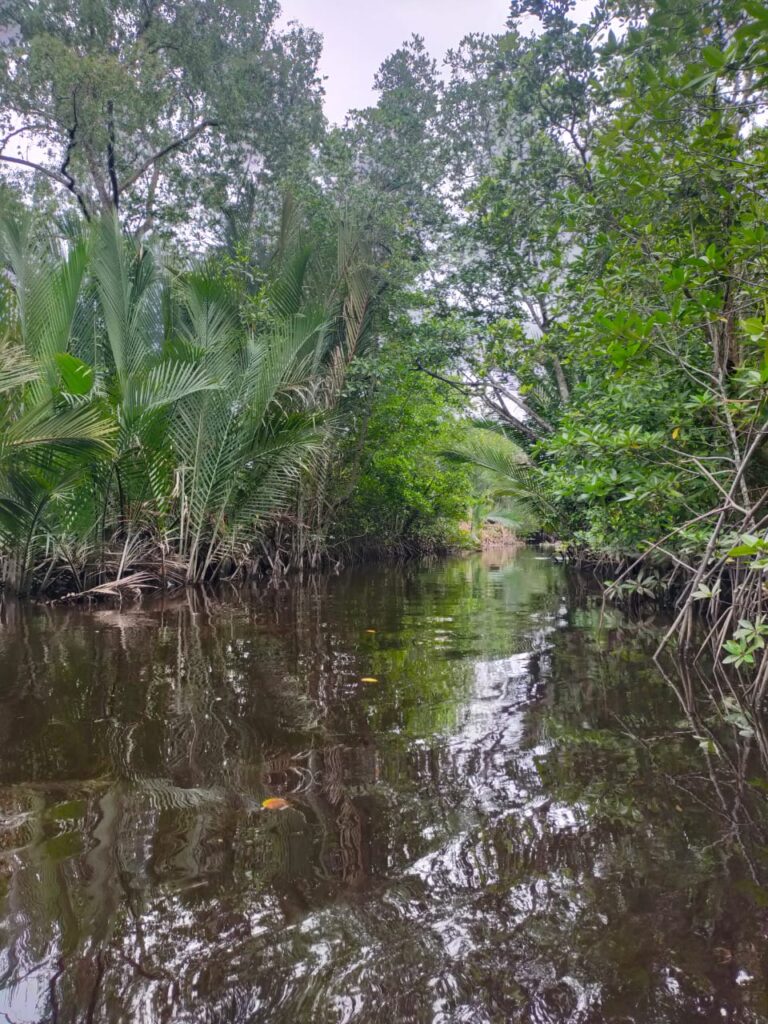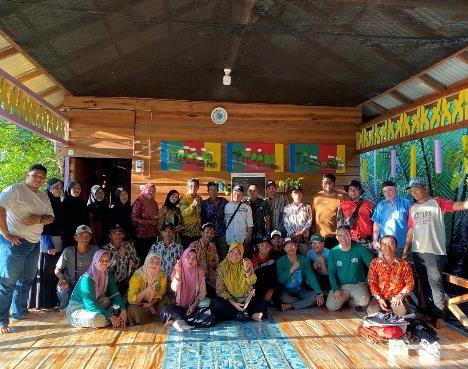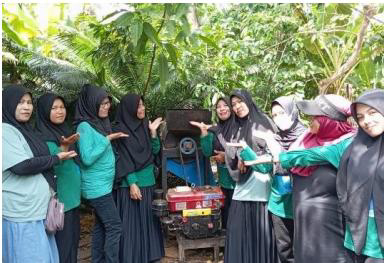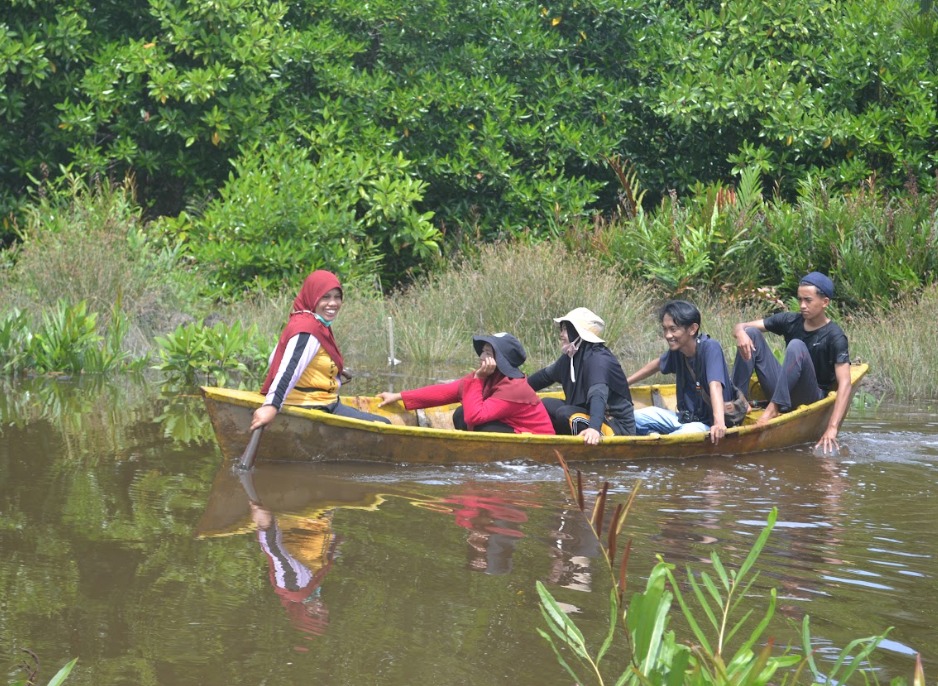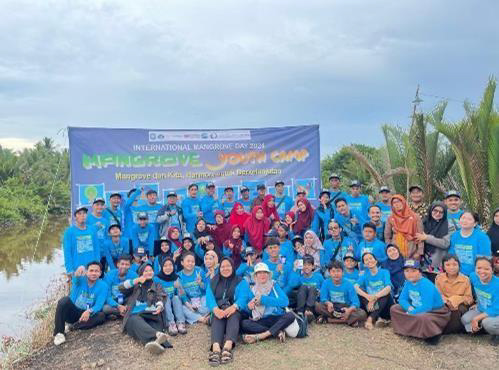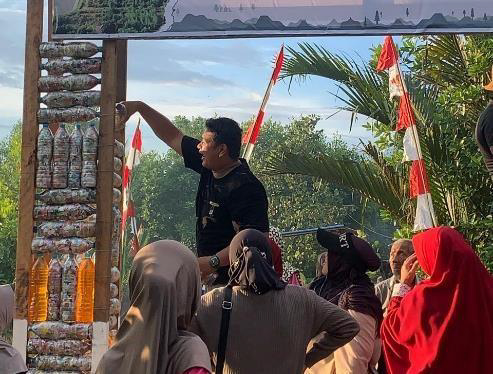Half of the once-extensive mangrove forest around the village of Medan Mas was destroyed to make room for shrimp and fish ponds. Many of those ponds were soon abandoned, leaving a legacy of chemical contamination, disrupted water channels, and depleted fisheries. Losing so much of the local mangrove habitat also made the village vulnerable to damage from wind, waves, and erosion.
The village’s forest is part of the Batu Ampar mangrove forest, one of the most extensive mangrove forests in Asia. The area contains an impressive 33 species of mangroves, including a critically endangered one. It is home to endangered proboscis monkeys and Irrawaddy dolphins. The loss of mangrove habitat is a direct cause of the monkey population’s decline.
The people of Medan Mas began replanting mangroves on the abandoned ponds, aiming to reclaim 25 acres. They are using the well-regarded Ecological Mangrove Rehabilitation method, which stresses restoring natural patterns of hydrology. This encourages mangroves and associated species to come back naturally. Community members also patrol the mangroves to stop illegal cutting for charcoal.
To make a living without cutting forest trees, the village plans to promote wildlife-based mangrove ecotourism and explore non-timber products. With help from the Blue Forest Foundation, they are looking into making products from shrimp or crabs, harvesting honey from kelulut bees, making drinks from mangrove fruits, and creating handicrafts from nipa palm leaves.
The village is using a Seacology grant to build a Coastal Learning Center. They will use it for children’s environmental education, and for trainings on non-timber forest products, fisheries management, and mangrove rehabilitation.


